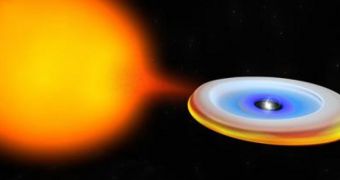A neutron star that sits some 18,000 light-years away from our planet, in the constellation Sagittarius, has the uncanny ability to constantly switch from being a radio pulsar to being an X-ray pulsar and then back again.
Scientists who have had the chance to investigate the star's odd behavior say that, all things considered, it very much resembles a famous fictional character. Or, better said, characters.
“What we're seeing is a star that is the cosmic equivalent of ‘Dr. Jekyll and Mr. Hyde,’ with the ability to change from one form to its more intense counterpart with startling speed,” explains Scott Random with the National Radio Astronomy Observatory in Charlottesville, Virginia, as cited by EurekAlert.
Writing in a recent issue of the journal Nature, researchers explain that neutron stars are basically the super dense remains of massive stars that, at one point in the past, exploded as supernovas.
This so-called Jekyll and Hyde neutron star, otherwise known as IGR J18245-2452, happens to be located fairly close to a low-mass star whose density is close to normal.
Every once in a while, IGR J18245-2452 strips its accompanying star of some of its material. Once it reaches the neutron star's surface, the material heats to impressive temperatures and X-rays get generated.
Once the flow of material from the normal star near it stops, the Jekyll and Hyde star switches to generating radio waves, courtesy of its powerful magnetic fields.
This process explains why it sometimes behaves like a radio pulsar and why, at times, it switches to being an X-ray pulsar.

 14 DAY TRIAL //
14 DAY TRIAL //